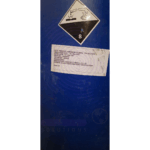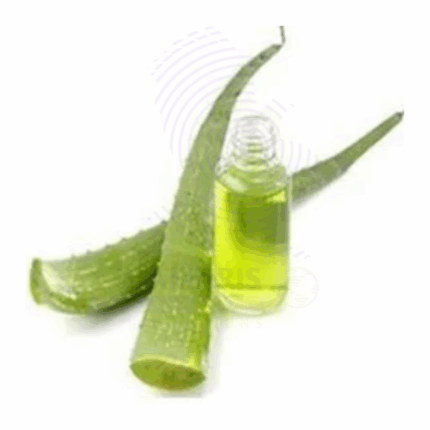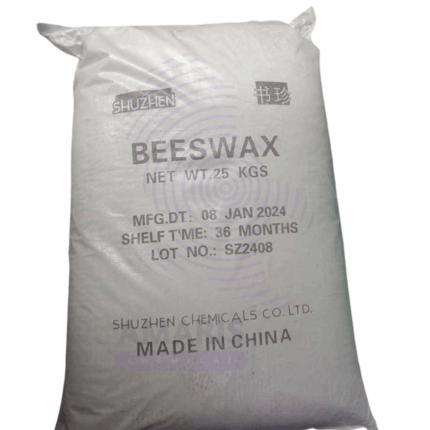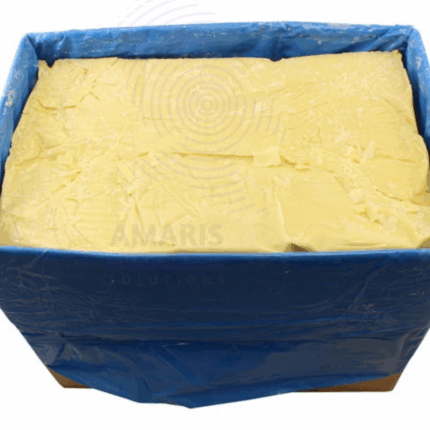Cetyl Stearyl Alcohol (CSA)
Cetyl Stearyl Alcohol (CSA), also known as Cetearyl Alcohol, is a blended fatty alcohol consisting primarily of cetyl (C16) and stearyl (C18) alcohols. It appears as white to pale yellow waxy flakes or pellets with a mild fatty odor. CSA is widely used in cosmetics, pharmaceuticals, and personal care products as an emollient, thickener, and co-emulsifier. It enhances texture, improves stability, and provides a smooth, velvety skin feel in formulations. Being a non-ionic surfactant, it also aids in stabilizing oil-in-water emulsions and is favored for its gentle nature on the skin and hair.
Cetyl Stearyl Alcohol (CSA) Uses
Primary Uses
Cosmetics & Personal Care
- Used extensively as an emollient and thickener in creams, lotions, conditioners, hair care products, and deodorants.
- Functions as a co-emulsifier, stabilizing oil-in-water and water-in-oil emulsions, enhancing product texture and longevity.
- Improves the sensory feel, spreadability, and moisturization of topical formulations.
- Provides a smooth, non-greasy finish in lipsticks, balms, and other makeup products.
Pharmaceuticals
- Acts as a base and thickening agent in ointments, creams, and lotions for topical drug delivery.
- Provides emollient properties and stabilizes medicated creams to enhance patient compliance and efficacy.
Secondary Uses
Industrial Applications
- Used as a lubricant, anti-static agent, and processing aid in plastics, textiles, and rubber industries.
- Employed in wax blends and coatings to improve surface texture and gloss.
Hair Care Products
- Incorporated in shampoos and conditioners for conditioning and smoothing effects.
Personal Hygiene
Utilized in deodorant sticks and solid antiperspirant formulations to enhance hardness and stability.
- Basic Identification Attributes
- Chemical Name (IUPAC): Mixture of hexadecan-1-ol and octadecan-1-ol
- Common/Trade Name: Cetyl Stearyl Alcohol, Cetearyl Alcohol (CSA)
- CAS Number: 67762-27-0 (mixture)
- HS Code: 2905.43.00
- Molecular Formula: C16H34O (cetyl alcohol), C18H38O (stearyl alcohol)
- Molecular Weight: Approx. 242.45 g/mol (cetyl), 270.49 g/mol (stearyl)
- Synonyms:
- Cetearyl Alcohol
- Cetostearyl Alcohol
- CSA
- Physical & Chemical Properties
- Physical State: Solid flakes or pellets
- Color & Odor: White to pale yellow; mild fatty odor
- Melting Point: 48–57°C (118–135°F)
- Boiling Point: Approx. 350°C (decomposes)
- Density: ~0.81–0.83 g/cm³ at 20°C
- Solubility:
- Insoluble in water
- Soluble in oils, ethanol, chloroform
- Flash Point: ~190°C
- Purity: Typically 95–100% combined cetyl and stearyl alcohols
- Stability: Stable under normal storage and usage conditions
- Safety & Hazard Attributes
- Hazard Class (GHS): Not classified as hazardous
- NFPA Ratings:
- Health: 0
- Flammability: 1
- Reactivity: 0
- Exposure Limits: None specifically established
- Toxicity: Low toxicity; widely considered safe for cosmetic and pharmaceutical use
- Reactivity: Stable, combustible at high temperatures
- Storage & Handling Attributes
- Storage Conditions: Store in a cool, dry place away from sources of ignition
- Container Type: Sealed plastic drums or lined metal containers
- Shelf Life: Up to 3 years if stored properly
- Special Handling: Avoid dust formation; use PPE when handling bulk quantities
- Regulatory & Compliance Attributes
- FDA Status: Approved for use in cosmetics and pharmaceuticals
- REACH Status: Registered
- Transportation: Not regulated as hazardous
- Waste Disposal: Follow local and regional regulations; biodegradable
- Environmental & Health Impact
- Ecotoxicity: Low environmental impact
- Persistence: Biodegradable
- Bioaccumulation: Not expected to bioaccumulate
- Carcinogenicity/Mutagenicity: Not classified as carcinogenic or mutagenic
Biodegradability: Readily biodegradable
-
Safety Handling Precautions
- PPE: Use gloves, protective eyewear, and dust masks if handling large quantities
- Handling: Avoid inhalation of dust and contact with hot molten material
- Storage: Keep containers tightly closed and away from heat or open flames
- Hygiene: Wash hands after handling; avoid ingestion and eye contact
First Aid Measures
- Inhalation: Move to fresh air if dust inhaled; seek medical attention if respiratory symptoms occur
- Skin Contact: Wash thoroughly with soap and water; seek medical advice if irritation develops
- Eye Contact: Flush eyes with water for at least 15 minutes; consult a doctor if irritation persists
- Ingestion: Low toxicity; rinse mouth and seek medical advice if large amounts are ingested
Firefighting Measures
- Fire Hazards: Combustible material; burns with a smoky flame
- Extinguishing Media: Use foam, dry chemical powder, CO₂, or water spray
- Special Precautions: Firefighters should wear full protective gear and self-contained breathing apparatus
Decomposition Products: May emit carbon monoxide, carbon dioxide, and hydrocarbons when burned


 Preservatives(food)
Preservatives(food) Flavor Enhancers
Flavor Enhancers Acidulants
Acidulants Sweeteners
Sweeteners Antioxidants
Antioxidants Colorants(food)
Colorants(food) Nutraceutical Ingredients (food)
Nutraceutical Ingredients (food) Nutrient Supplements
Nutrient Supplements Emulsifiers
Emulsifiers
 Collectors
Collectors Dust Suppressants
Dust Suppressants Explosives and Blasting Agents
Explosives and Blasting Agents Flocculants and Coagulants
Flocculants and Coagulants Frothers
Frothers Leaching Agents
Leaching Agents pH Modifiers
pH Modifiers Precious Metal Extraction Agents
Precious Metal Extraction Agents
 Antioxidants(plastic)
Antioxidants(plastic) Colorants (Pigments, Dyes)
Colorants (Pigments, Dyes) Fillers and Reinforcements
Fillers and Reinforcements Flame Retardants
Flame Retardants Monomers
Monomers Plasticizers
Plasticizers Polymerization Initiators
Polymerization Initiators Stabilizers (UV, Heat)
Stabilizers (UV, Heat)
 Antifoaming Agents
Antifoaming Agents Chelating Agents
Chelating Agents Coagulants and Flocculants
Coagulants and Flocculants Corrosion Inhibitors
Corrosion Inhibitors Disinfectants and Biocides
Disinfectants and Biocides Oxidizing Agents
Oxidizing Agents pH Adjusters
pH Adjusters Scale Inhibitors( water)
Scale Inhibitors( water)
 Antioxidants(cosmetic)
Antioxidants(cosmetic) Emollients
Emollients Fragrances and Essential Oils
Fragrances and Essential Oils Humectants
Humectants Preservatives
Preservatives Surfactants(cosmetic)
Surfactants(cosmetic) Thickeners
Thickeners UV Filters
UV Filters
 Fertilizers
Fertilizers Soil Conditioners
Soil Conditioners Plant Growth Regulators
Plant Growth Regulators Animal Feed Additives
Animal Feed Additives Biostimulants
Biostimulants Pesticides (Herbicides, Insecticides, Fungicides)
Pesticides (Herbicides, Insecticides, Fungicides)
 Active Pharmaceutical Ingredients (APIs)
Active Pharmaceutical Ingredients (APIs) Excipients
Excipients Solvents(pharmaceutical)
Solvents(pharmaceutical) Antibiotics
Antibiotics Antiseptics and Disinfectants
Antiseptics and Disinfectants Vaccine Adjuvants
Vaccine Adjuvants Nutraceutical Ingredients (pharmaceutical)
Nutraceutical Ingredients (pharmaceutical) Analgesics & Antipyretics
Analgesics & Antipyretics
 Analytical Reagents
Analytical Reagents Solvents(lab)
Solvents(lab) Chromatography Chemicals
Chromatography Chemicals Spectroscopy Reagents
Spectroscopy Reagents microbiology-and-cell-culture-reagents
microbiology-and-cell-culture-reagents Molecular Biology Reagents
Molecular Biology Reagents Biochemical Reagents
Biochemical Reagents Inorganic and Organic Standards
Inorganic and Organic Standards Laboratory Safety Chemicals
Laboratory Safety Chemicals Specialty Laboratory Chemicals(Special Laboratory Equipment)
Specialty Laboratory Chemicals(Special Laboratory Equipment)
 Demulsifiers
Demulsifiers Hydraulic Fracturing Fluids
Hydraulic Fracturing Fluids Scale Inhibitors(oil)
Scale Inhibitors(oil) Surfactants(oil)
Surfactants(oil) Drilling Fluids
Drilling Fluids
 Dyes and Pigments
Dyes and Pigments Bleaching Agents
Bleaching Agents Softening Agents
Softening Agents Finishing Agents
Finishing Agents Antistatic Agents
Antistatic Agents
 Admixtures
Admixtures Waterproofing Agents
Waterproofing Agents Sealants and Adhesives
Sealants and Adhesives Curing Compounds
Curing Compounds Concrete Repair Chemicals
Concrete Repair Chemicals Anti-Corrosion Coatings
Anti-Corrosion Coatings
 Surfactants(cleaning)
Surfactants(cleaning) Builders
Builders Enzymes
Enzymes Solvents (Cleaning)
Solvents (Cleaning) Fragrances
Fragrances
 Electronic Chemicals
Electronic Chemicals Catalysts
Catalysts Lubricants
Lubricants Photographic Chemicals
Photographic Chemicals Refrigerants
Refrigerants Automotive chemicals
Automotive chemicals Pyrotechnic Chemicals
Pyrotechnic Chemicals
 Biodegradable Surfactants
Biodegradable Surfactants Bio-based Solvents
Bio-based Solvents Renewable Polymers
Renewable Polymers Carbon Capture Chemicals
Carbon Capture Chemicals Wastewater Treatment Chemicals
Wastewater Treatment Chemicals
 Pigments
Pigments Solvents(paint)
Solvents(paint) Specialty Coatings
Specialty Coatings Binders/Resins
Binders/Resins Additives
Additives Driers
Driers Anti-Corrosion Agents
Anti-Corrosion Agents Functional Coatings
Functional Coatings Application-Specific Coatings
Application-Specific Coatings
 Fresh Herbs
Fresh Herbs Ground Spices
Ground Spices Whole Spices
Whole Spices Spice Blends
Spice Blends Dried Herbs
Dried Herbs
 Leavening Agents
Leavening Agents Dough Conditioners
Dough Conditioners Flour Treatments
Flour Treatments Fat Replacers
Fat Replacers Decoratives
Decoratives Preservatives(baking)
Preservatives(baking)
 Plasticizers & Softeners
Plasticizers & Softeners Reinforcing Agents
Reinforcing Agents Adhesion Promoters
Adhesion Promoters Vulcanizing Agents
Vulcanizing Agents Antidegradants
Antidegradants Blowing Agents
Blowing Agents Fillers & Extenders
Fillers & Extenders Accelerators & Retarders
Accelerators & Retarders
























